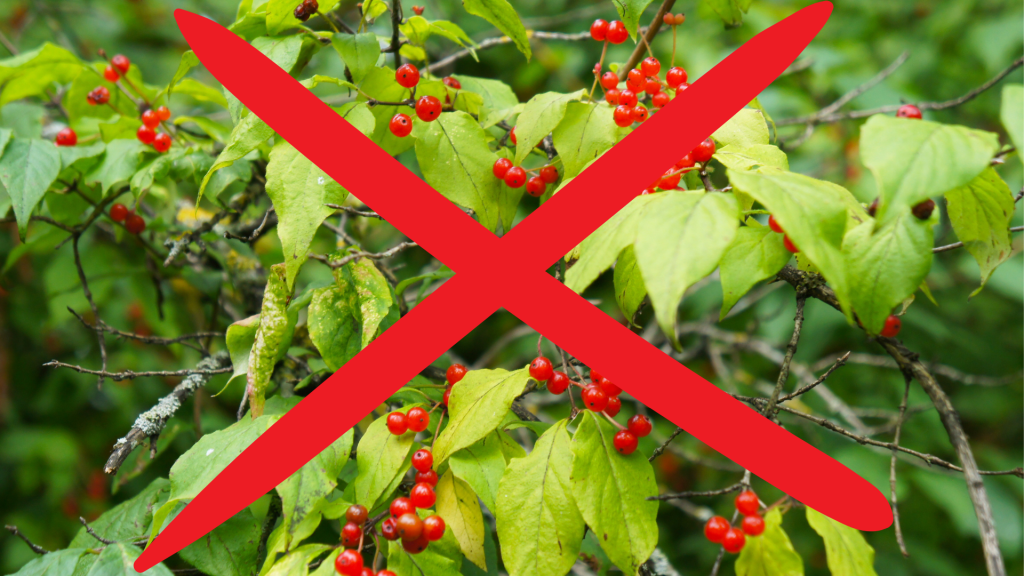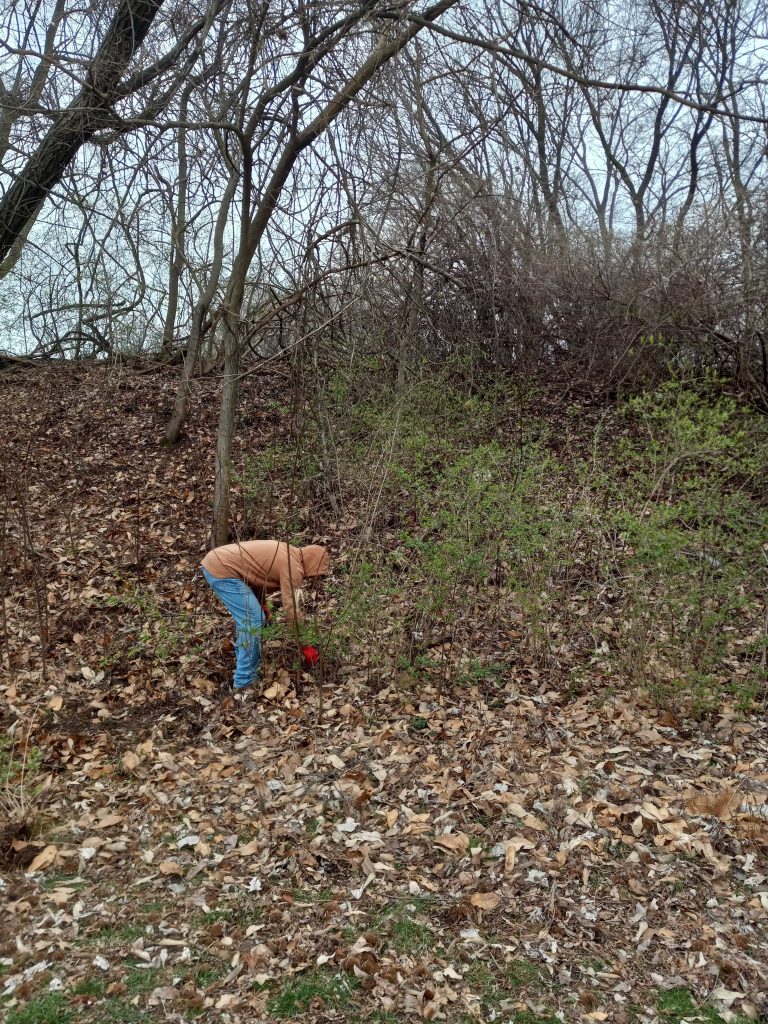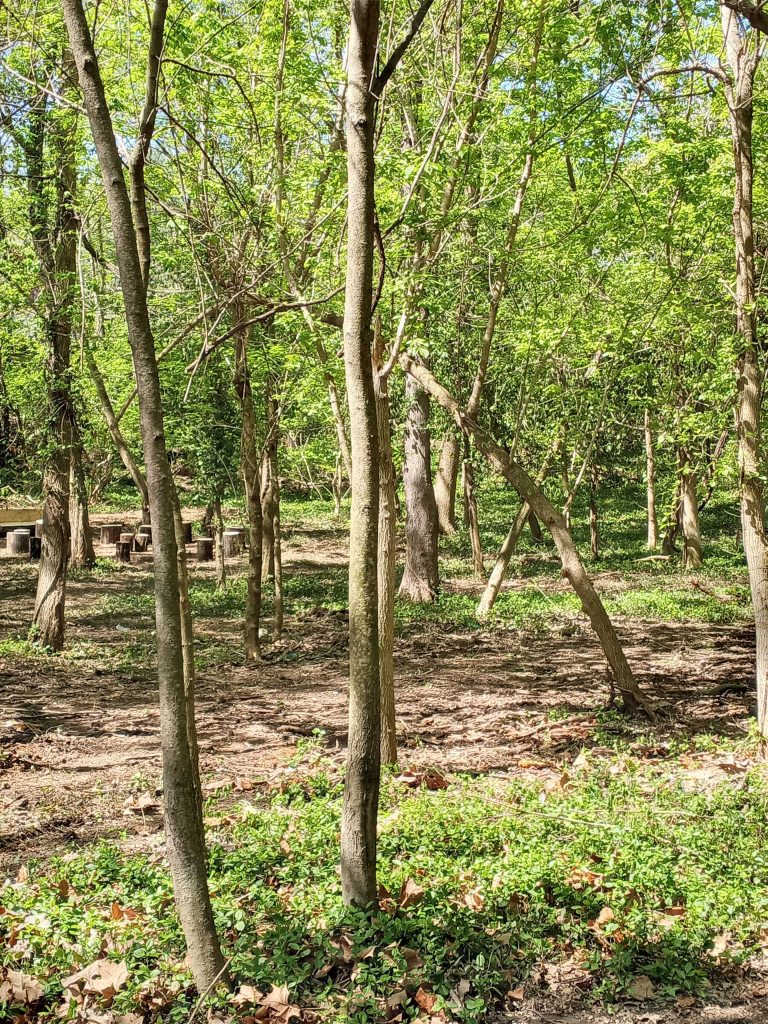Ways to Remove Bush Honeysuckle and Why It’s Important for Biodiversity
Invasive bush honeysuckle has become a serious problem for homeowners and the environment in St. Louis. This non-native shrub grows quickly and crowds out native plants, harming local ecosystems. It is important for homeowners to remove bush honeysuckle from their property to help restore the balance of the natural environment.
Here are the top 6 ways a homeowner can remove invasive bush honeysuckle from their property, and the best native replacement plants if you are left with a bare landscape after removal.

- Hand Pulling
The most effective way to remove small bush honeysuckle plants is by hand pulling. Wear gloves and use a shovel or weed wrench to dig out the root system. It’s essential to remove the entire root system to prevent the plant from growing back.
- Cut Stump Treatment
For larger bushes, cut the stem near the base and apply an herbicide to the stump. This method is called cut stump treatment. Herbicides such as glyphosate or triclopyr are effective at killing the roots and preventing regrowth. It’s important to follow the label instructions and apply herbicides carefully to avoid harming other plants.

- Foliar Spraying
Foliar spraying is another effective way to remove bush honeysuckle. This method involves spraying the leaves with an herbicide, which is then absorbed into the plant’s system and kills the roots. However, this method is only effective when the plant is actively growing, usually in the spring or fall.
- Controlled Burning
Controlled burning is a method used by professionals to remove larger areas of bush honeysuckle. The fire burns the plant’s leaves and stem, killing the above-ground portion and leaving the roots intact. This method is only recommended for larger areas and should only be done by professionals.
- Mechanical Removal
Mechanical removal involves using heavy machinery to remove large areas of bush honeysuckle. This method is only recommended for areas that are inaccessible or have a large amount of bush honeysuckle. However, this method can cause damage to the soil and should only be done by professionals.
- Combination Approach
A combination of methods is often the most effective way to remove bush honeysuckle. For example, cutting the stem and then applying an herbicide to the stump will prevent the plant from growing back. Using a combination of methods will ensure that the plant is completely removed and will not regrow.

Why Removing Bush Honeysuckle is Important for the Environment in St. Louis
Bush honeysuckle is not native to the St. Louis area and has no natural predators. As a result, it grows quickly and out-competes native plants for resources such as water, light, and nutrients. This leads to a decrease in biodiversity and the loss of habitat for native species. Removing bush honeysuckle will allow native plants to return and provide habitat for local wildlife.
How a Professional Landscaper can Help
A landscaper can help homeowners remove bush honeysuckle from their property by providing expert advice and implementing the best removal methods. They can also help homeowners choose native plants to replace the honeysuckle, which will promote biodiversity and provide habitat for local wildlife. A landscaper can also provide ongoing maintenance to ensure that the native plants thrive.
Good Plants to Replace Honeysuckle
There are many native plants that can replace honeysuckle, such as:
- Eastern Redbud: A small tree that produces pink flowers in the spring.
- Black-eyed Susan: A perennial flower that attracts pollinators and provides food for birds.
- Spicebush: A shrub that produces yellow flowers in the spring and red berries in the fall.
- Butterfly Weed: A perennial flower that attracts butterflies and provides food for caterpillars.
- Virginia Creeper: A vine that provides habitat for birds and produces red berries in the fall.
Find more native plant recommendations in many of our other blog articles, including this one that lists our top favorites that perform well in most yards. They are hardy plants that are beautiful, too! You can also see other top performing plants we frequenty feature in landscape designs here.
